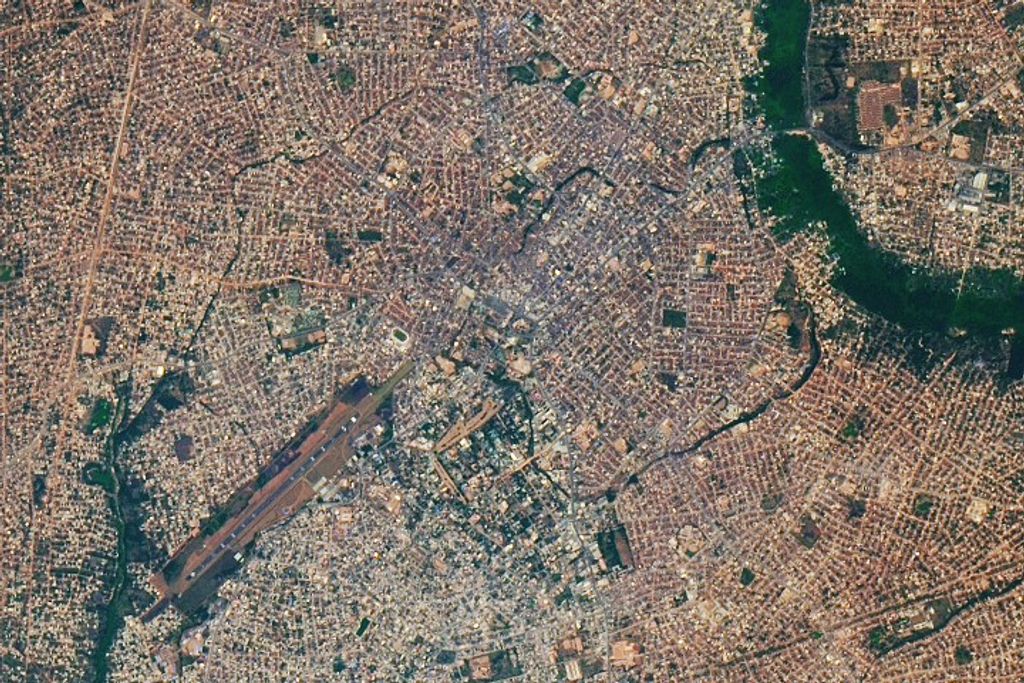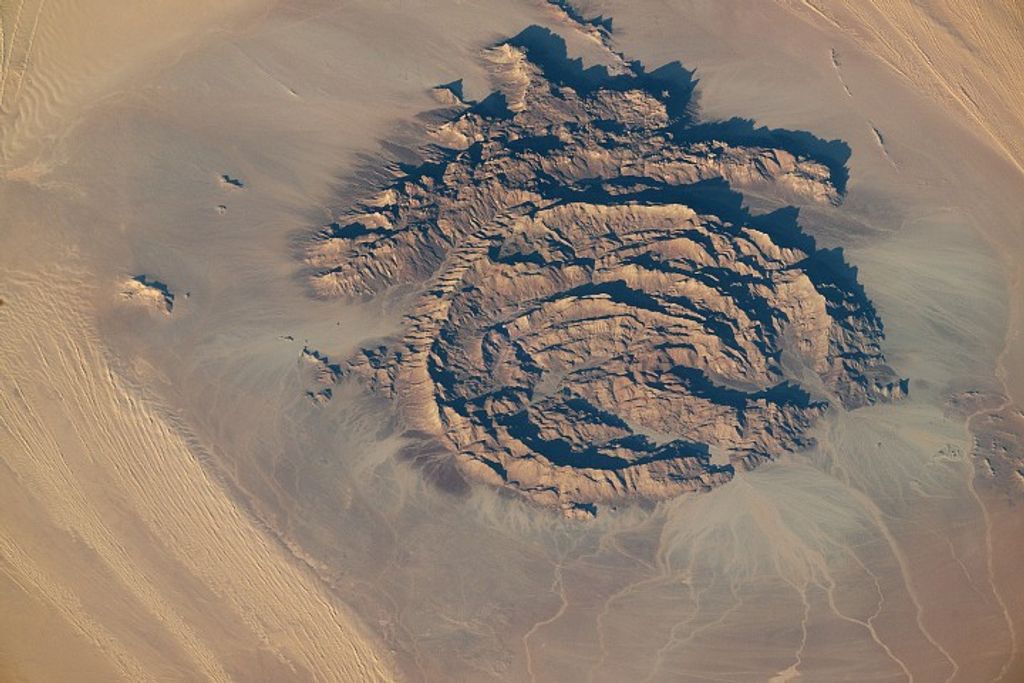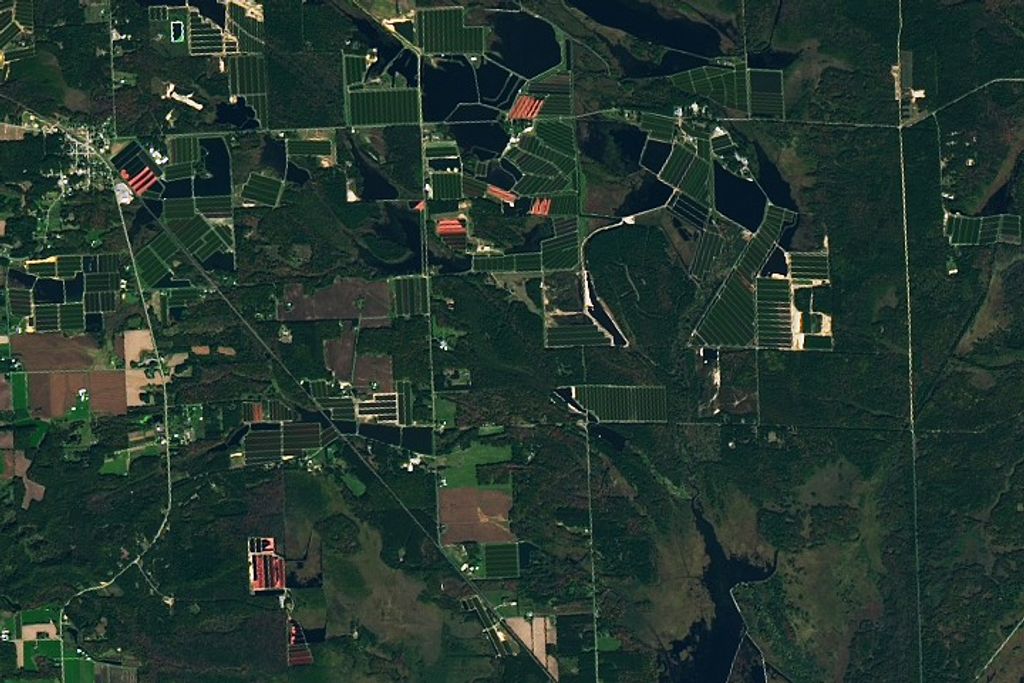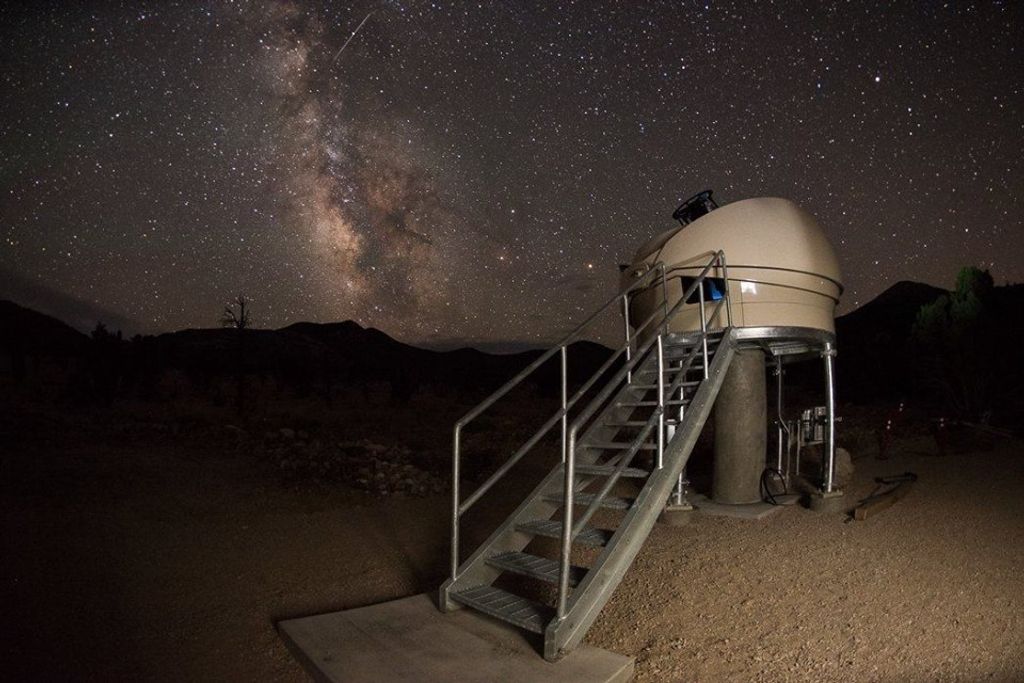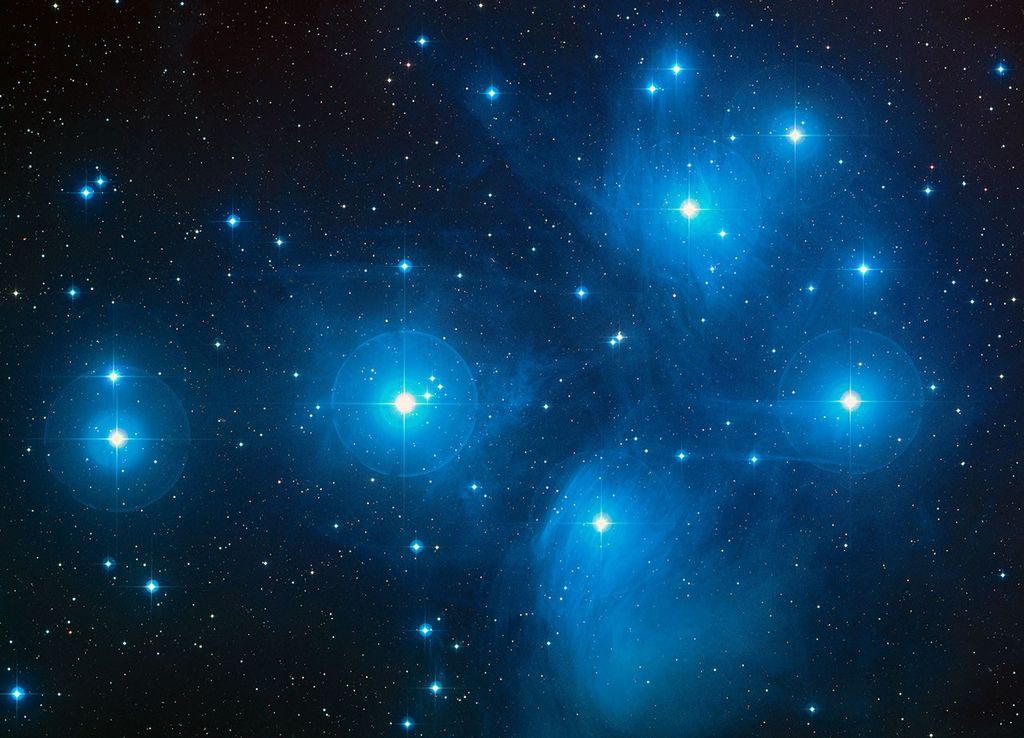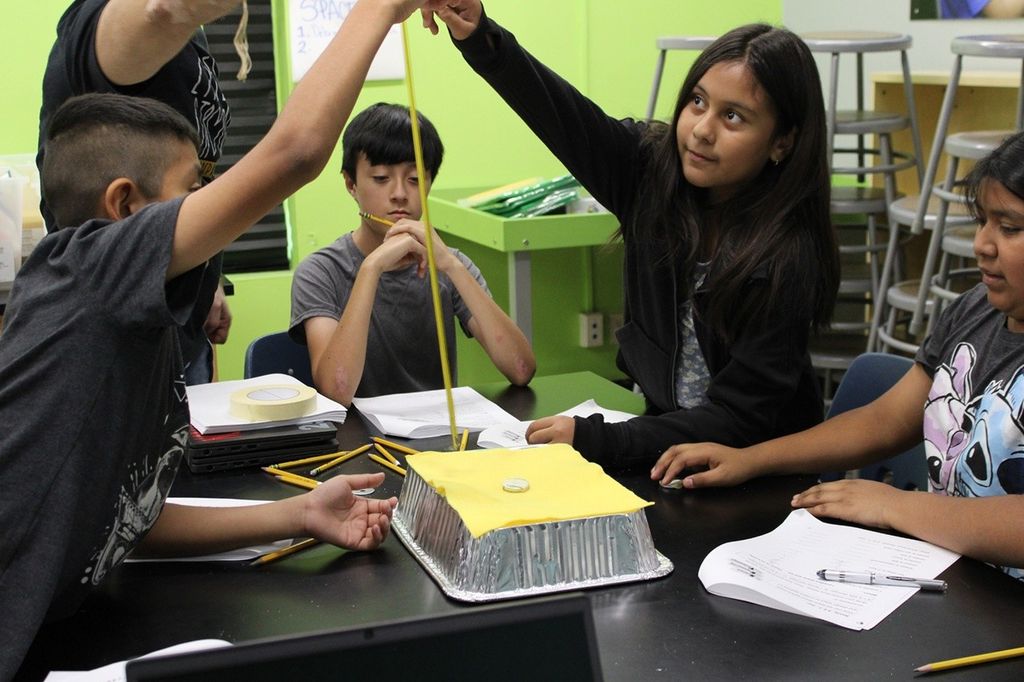1 min read
The Bubble Nebula, NGC 7635 (WFPC2)

Astronomers, using the Wide Field Planetary Camera 2 on board NASA's Hubble Space Telescope in October and November 1997 and April 1999, imaged the Bubble Nebula (NGC 7635) with unprecedented clarity. For the first time, they are able to understand the geometry and dynamics of this very complicated system. Earlier pictures taken of the nebula with the Wide Field Planetary Camera 1 left many issues unanswered, as the data could not be fully calibrated for scientific use. In addition, those data never imaged the enigmatic inner structure presented here.
The remarkably spherical "Bubble" marks the boundary between an intense wind of particles from the star and the more quiescent interior of the nebula. The central star of the nebula is 40 times more massive than the Sun and is responsible for a stellar wind moving at 2,000 kilometers per second (4 million miles per hour or 7 million kilometers per hour) which propels particles off the surface of the star. The bubble surface actually marks the leading edge of this wind's gust front, which is slowing as it plows into the denser surrounding material. The surface of the bubble is not uniform because as the shell expands outward it encounters regions of the cold gas, which are of different density and therefore arrest the expansion by differing amounts, resulting in the rippled appearance. It is this gradient of background material that the wind is encountering that places the central star off center in the bubble. There is more material to the northeast of the nebula than to the southwest, so that the wind progresses less in that direction, offsetting the central star from the geometric center of the bubble. At a distance of 7,100 light-years from Earth, the Bubble Nebula is located in the constellation Cassiopeia and has a diameter of 6 light-years.
To the right of the central star is a ridge of much denser gas. The lower left portion of this ridge is closest to the star and so is brightest. It is experiencing the most intense ultraviolet radiation as well as the strong wind and is therefore being photoevaporated the fastest. The ridge forms a V-shape in the image, with two segments that are aligned at the brightest edge. The upper of these two segments is viewed quite obliquely as it trails off into the back of the nebula. The lower segment comes both toward the observer and off to the side. This lower ridge appears to lie within the sphere described by the bubble but is not actually "inside" the shocked region of gas. Instead it is being pushed up against the bubble like a hand being pushed against the outside of a party balloon. While the edge of the hand appears to be inside the balloon, it is not. As the bubble moves up but not through the ridge, bright blue arcs form where the supersonic wind strikes the ridge to form an apparent series of nested shock fronts.
The region between the star and ridge reveals several loops and arcs which have never been seen before. The high resolution capabilities of Hubble make it possible to examine these features in detail in a way that is not possible from the ground. The origin of this bubble-within-a-bubble" is unknown at this time. It may be due to a collision of two distinct winds. The stellar wind may be colliding with material streaming off the ridge as it is photoevaporated by the star's radiation.
Located at the top of the picture are dense clumps or fingers of molecular gas which have not yet encountered the expanding shell. These structures are similar in form to the columns in the Eagle Nebula, except that they are not being eroded as energetically as they are in that nebula. As in the Eagle, the clumps are seen to emit light because they are being illuminated by the strong ultraviolet radiation from the central star, which travels much faster than the shell and has reached the outer knots long before the expanding rim will.
About the Object
- R.A. PositionR.A. PositionRight ascension – analogous to longitude – is one component of an object's position.23h 20m 48.3s
- Dec. PositionDec. PositionDeclination – analogous to latitude – is one component of an object's position.61° 12' 6.0"
- ConstellationConstellationOne of 88 recognized regions of the celestial sphere in which the object appears.Cassiopeia
- DistanceDistanceThe physical distance from Earth to the astronomical object. Distances within our solar system are usually measured in Astronomical Units (AU). Distances between stars are usually measured in light-years. Interstellar distances can also be measured in parsecs.7,100 light-years (2,100 parsecs)
About the Data
- Data DescriptionData DescriptionProposal: A description of the observations, their scientific justification, and the links to the data available in the science archive.
Science Team: The astronomers who planned the observations and analyzed the data. "PI" refers to the Principal Investigator.The HST data were provided by observations from the proposal 7515, PI: D. Walter (South Carolina State University) et al. The science team comprises D. Walter (South Carolina State University), P. Scowen, J. Hester, and B. Moore (Arizona State University), and R. Dufour, P. Hartigan, and B. Buckalew (Rice University). - InstrumentInstrumentThe science instrument used to produce the data.HST>WFPC2
- Exposure DatesExposure DatesThe date(s) that the telescope made its observations and the total exposure time.April 1, 1999
- FiltersFiltersThe camera filters that were used in the science observations.F502N ([O III]), F656N (H-alpha), and F673N ([S II])
- Object NameObject NameA name or catalog number that astronomers use to identify an astronomical object.Bubble Nebula, NGC 7635
- Object DescriptionObject DescriptionThe type of astronomical object.O 6.5 Star
- Release DateJanuary 13, 2000
- Science ReleaseAn Expanding Bubble in Space
- CreditNASA, Donald Walter (South Carolina State University), Paul Scowen and Brian Moore (Arizona State University); Research Team: Donald Walter (South Carolina State University), Paul Scowen, Jeff Hester, Brian Moore (Arizona State University), Reggie Dufour, Patrick Hartigan and Brent Buckalew (Rice University).; Funding: Space Telescope Science Institute, NASA MUSPIN and NASA URC.

This image is a composite of separate exposures acquired by the WFPC2 instrument. Several filters were used to sample various wavelengths. The color results from assigning different hues (colors) to each monochromatic (grayscale) image associated with an individual filter. In this case, the assigned colors are: Blue: F502N ([O III]) Green: F656N (H-alpha) Red: F673N ([S II])
Share
Details
Claire Andreoli
NASA’s Goddard Space Flight Center
Greenbelt, Maryland
claire.andreoli@nasa.gov







